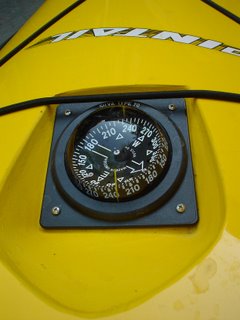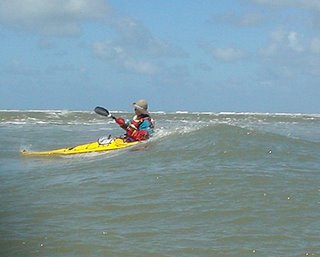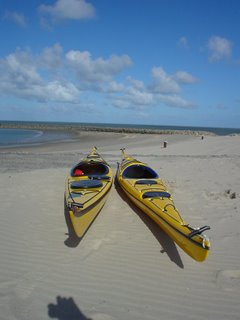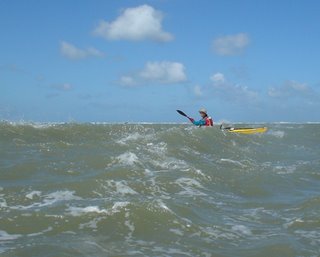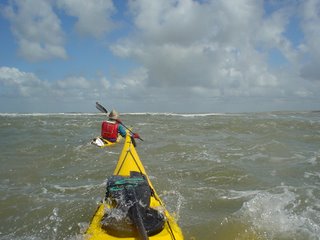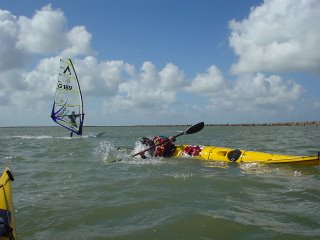One of the subtile differences between the Dutch and German seakayaking philosophy concerns the paddle leash. I have never met a Dutch seakayaker with the paddle on a leash. Within the Salzwasserunion it's compulsory. At our course with Dutch and German participants this situation caused some confusion and even some commotion.
My personal view on the leash-thing is quit indifferent. With or without paddle leash: there is no excuse for losing your paddle! Dutch kayakers are trained to keep a hand on the paddle all the time: also in a rescue situation. When you have difficulties with this, a paddle park or a paddle leash can help. So when you feel better with a paddle leash: use it! It's up to you!
In our mixed course I noticed that the German paddlers -in the beginning- didn't know what to do with the paddles of the Dutch victims in a rescue situation. That's no wonder as they were not trained for this situation. They soon got used to it. On the other side: I must admit that some Dutch paddlers did loose contact to their paddles during the excersises. Grrrr... They should train somewhat more ;-). OK: using a paddle leash makes handling a rescue situation easier... And when you use it the right way it's not in the way while paddling, rolling or bracing.
Contra the paddle leash might be (the fear for) a chance of strangulation, and it can tangle around all kind of things... Again: Make your own decission.
I have a short line with two carbiners on the front deck of the kayak. It's meant for short tows, or to tie the kayak up when it's floating on the water. But in a rescuesituation I can wrap it around the paddles of myself and/or the victim and use it as a sort of paddle park. The idea is not original: Atlantic Kayak Tours even sells prepared lines for this use...
The picture above shows a very sophisticated (and expensive) NRS-Paddle leash. However you don't have to spent much money: it's very simple to make one yourself (don't forget a quick release option).
PS:
At the end of the Spiekeroog course two Dutch kayakers were paddling with the paddle on a leash.

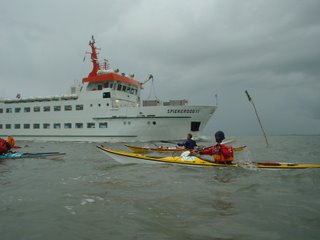


 On the water towing under rough conditions was the main issue. I paddled with my group further out at sea, but wind and tide were that strong that we hardly made any progress. In the afternoon we sat in the boat-house again for a First Aid lecture by Stephen.
On the water towing under rough conditions was the main issue. I paddled with my group further out at sea, but wind and tide were that strong that we hardly made any progress. In the afternoon we sat in the boat-house again for a First Aid lecture by Stephen.





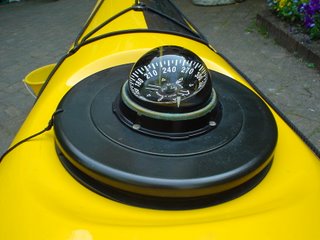
 To compare: the Silva 70P on the Valley Pintail with a recess in the deck:
To compare: the Silva 70P on the Valley Pintail with a recess in the deck: